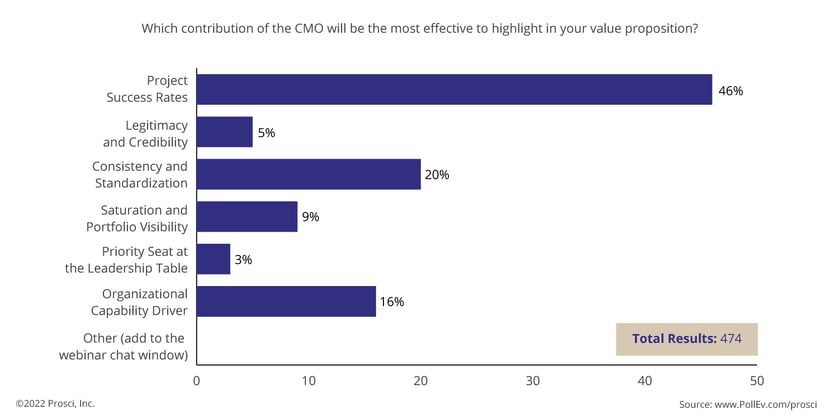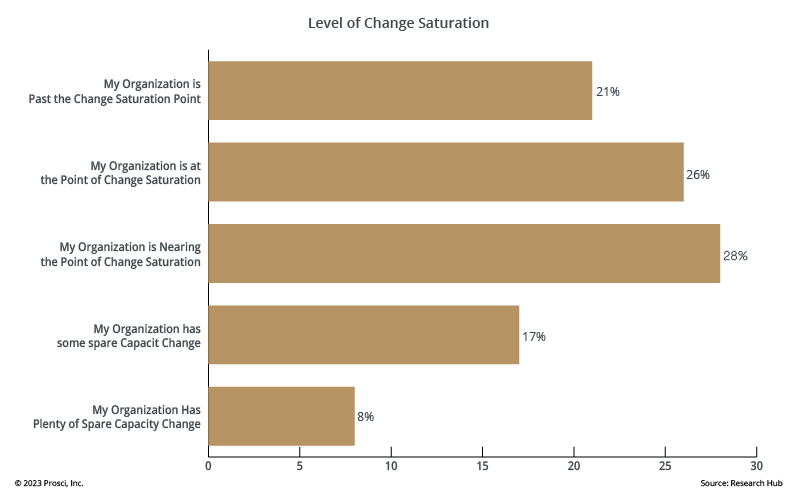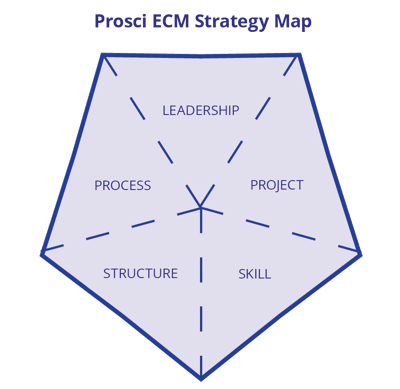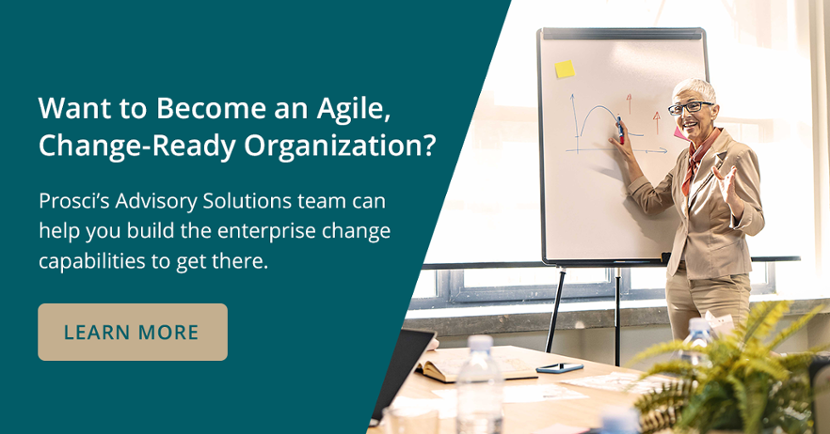You have no items in your shopping cart.
Does Your Organization Need a Change Management Office?

3 Mins
Updated: August 2, 2024
Published: November 30, 2022

A change management office (CMO) brings significant value to an organization. Research shows that organizations with CMOs tend to be higher on the change management maturity scale, which correlates with more successful change. And organizations of all sizes and in all industries can benefit. Here’s how.
Value Proposition of a CMO
Every organization has unique needs around change management, including what your CMO should look like, where it should live in your organization, and how to scope it functionally. If you’re considering standing up a CMO, you might be eager to get started. But before you develop your charter or even present your business case, you should understand the possibilities.
1. Do you need to improve project success rates?
A CMO will help you increase project success rates through better application of change management on all the changes you’re implementing and sustaining over time. It drives greater readiness, adoption and proficiency in a standardized way across the enterprise.
We also know from decades of Prosci research that excellent change management correlates with 7X greater likelihood of achieving project success. Change professionals who attended our webinar on How to Stand Up a CMO agree that this statistic will be essential in their efforts to gain support. If you could only choose one compelling reason to stand up a CMO, this would be it.
2. Do your teams need to apply a consistent and standardized
approach to change management?
Change-competent organizations don’t reinvent the wheel with each change. A CMO helps deliver consistency and standardization in how organizations apply change management, improving your practice and those you support over time. As a source of truth for change management, your CMO provides a common toolset, organizational methodology, templates, examples and best practices to support your change efforts.
3. Are you working to drive organizational change capability?
When building organizational change capability, the CMO enables you to continue achieving strong project outcomes while building change competencies. It acts as a capability multiplier by helping an entire organization get better at change. The CMO helps senior leaders internalize the ABCs of Sponsorship, equips project managers to build adoption-and-usage enablement plans alongside their technical plans, trains people managers who need to coach impacted team members, and much more.
4. Does your organization suffer from change saturation?
Change saturation can lead to employee burnout and poor change outcomes, so you need a way to understand, articulate and mitigate the cumulative and collective impact of the change portfolio on your people. The CMO offers visibility into the level of change going on across the entire organization, making it easier to address change saturation and collision in the organization.
5. Does change management have the legitimacy and credibility
required for success in your organization?
A formal CMO creates a functional home and ownership for building capabilities across the organization, which increases visibility for your change management successes and practice. For many organizations, if change management doesn't have a box on the organizational chart, team members struggle to get a foot in the door because the function is unknown or poorly understood by leaders.
6. Does your change management team need
representation at the leadership table?
To gain commitment and support for change management from organizational leaders, it pays to focus on what you deliver rather than what you do. But many change practitioners lack the strategic orientation needed to prepare and equip the organization for changes because they aren’t having those conversations. They don’t have a seat at the decision-making table. Establishing a change management process and CMO gets you that seat, gets you involved earlier in the conversation and at a higher level about the overall portfolio of changes in the organization.
7. Does your ECM effort have a structured and intentional approach?
When our Advisory Services team works with organizations to build their ECM practice, we apply the ECM Strategy Map. This research-based tool ensures adequate focus on five key areas, including the structure needed for success as you grow change capabilities over the next year, next three years, and next five years.
 Remember, enterprise change management (ECM) is more than managing many changes across an enterprise. It’s the systematic deployment of change management skills, tools and processes throughout an organization. As such, it must be treated like its own project and change to be managed with structure and intent. A CMO supports your organization’s ECM journey by providing this critical structure.
Remember, enterprise change management (ECM) is more than managing many changes across an enterprise. It’s the systematic deployment of change management skills, tools and processes throughout an organization. As such, it must be treated like its own project and change to be managed with structure and intent. A CMO supports your organization’s ECM journey by providing this critical structure.
8. Are you trying to grow the organization’s change management maturity?
Before you can start your journey to build ECM capabilities, you need to know where your organization stands today in terms of change management maturity. Prosci’s Change Management Maturity Model and audit are designed to evaluate your organization in five capability areas: Leadership, Application, Competencies, Standardization and Socialization. Clearly, the CMO is essential to developing the standardization capability area. But it also supports leadership, application, competencies and socialization.
Standing Up a CMO
Standing up a CMO could offer tremendous benefits to your organization. Having a clear understanding of your organization’s goals and what a CMO can offer is logical first step in your planning. And once you know the possibilities and weigh the benefits, you will be well prepared to discuss the value proposition of a CMO with leaders in your organization.


